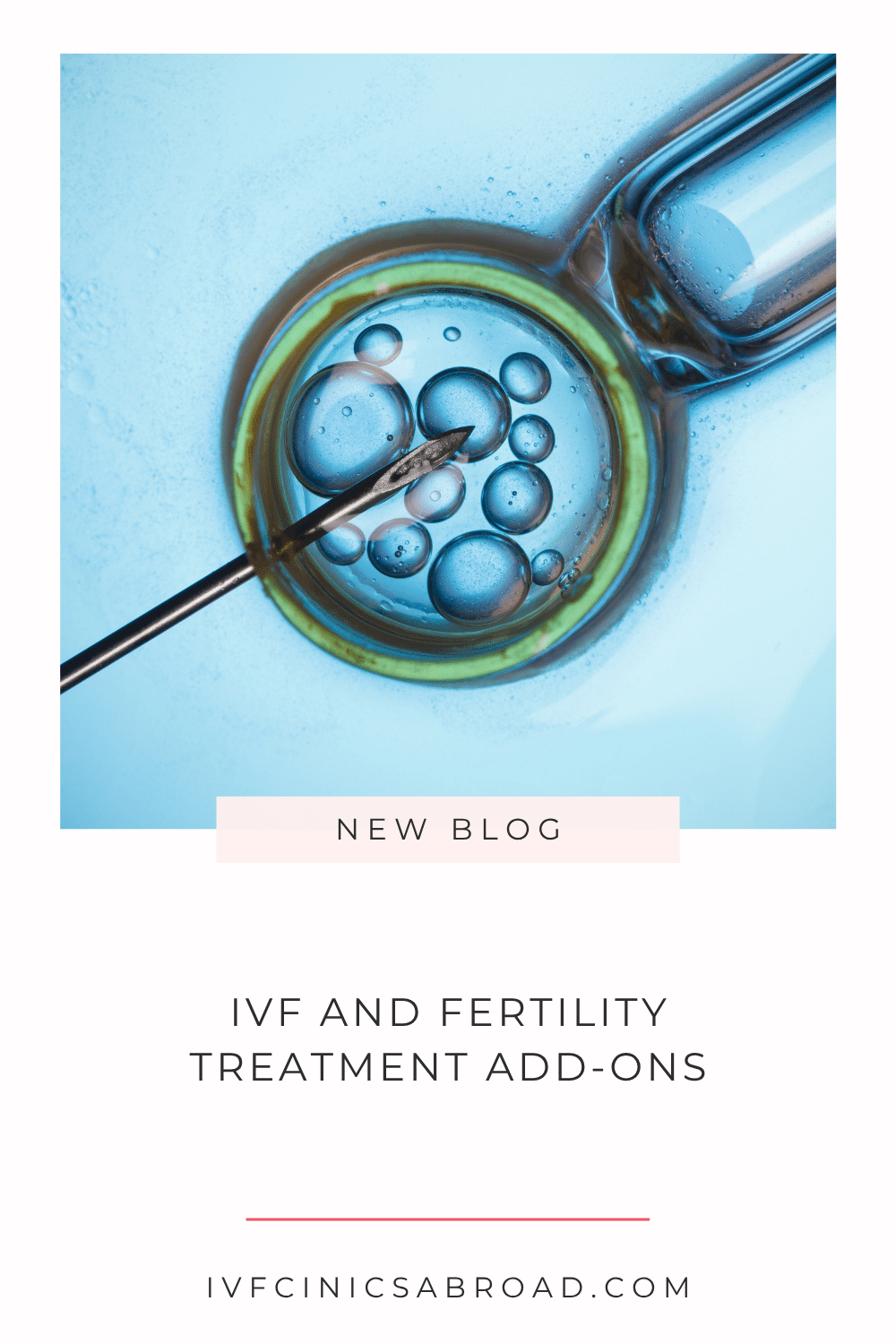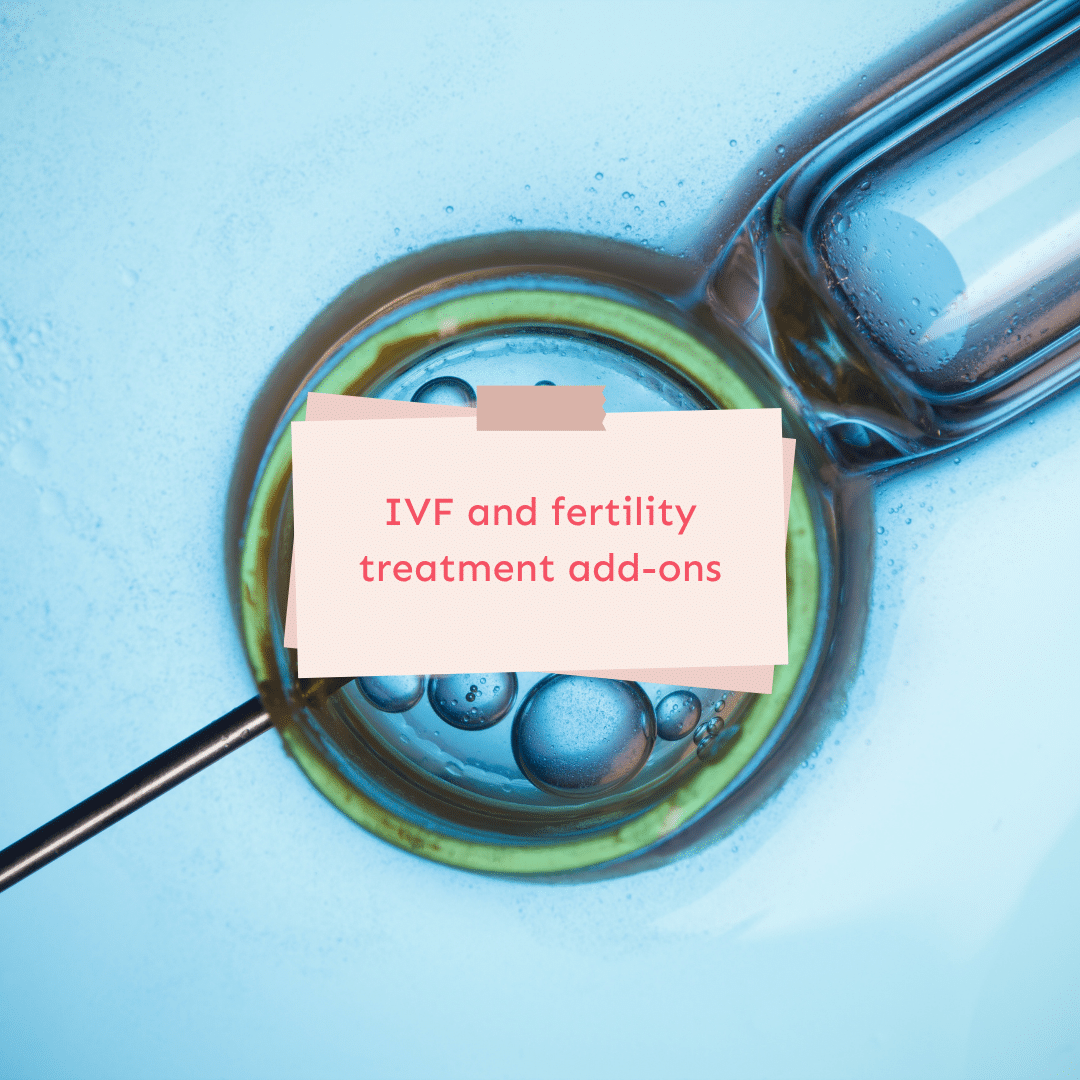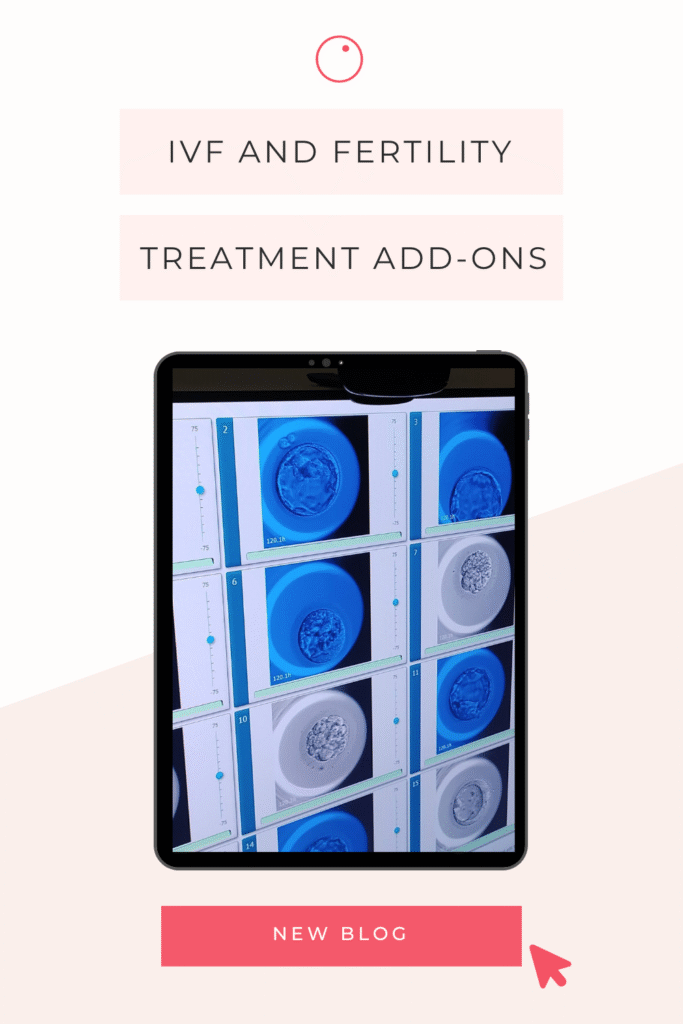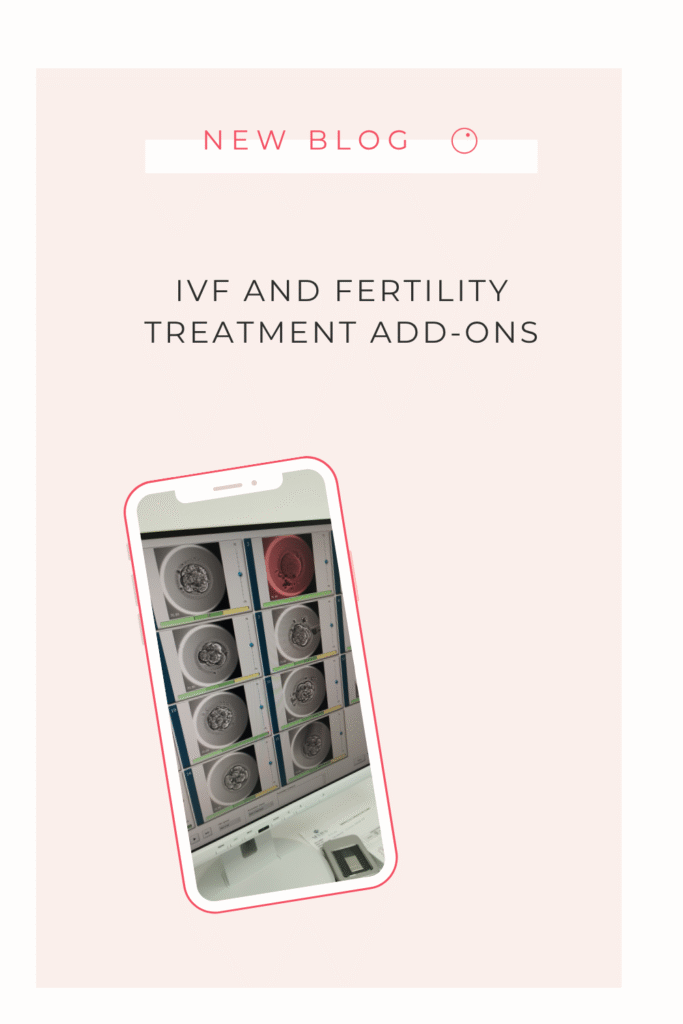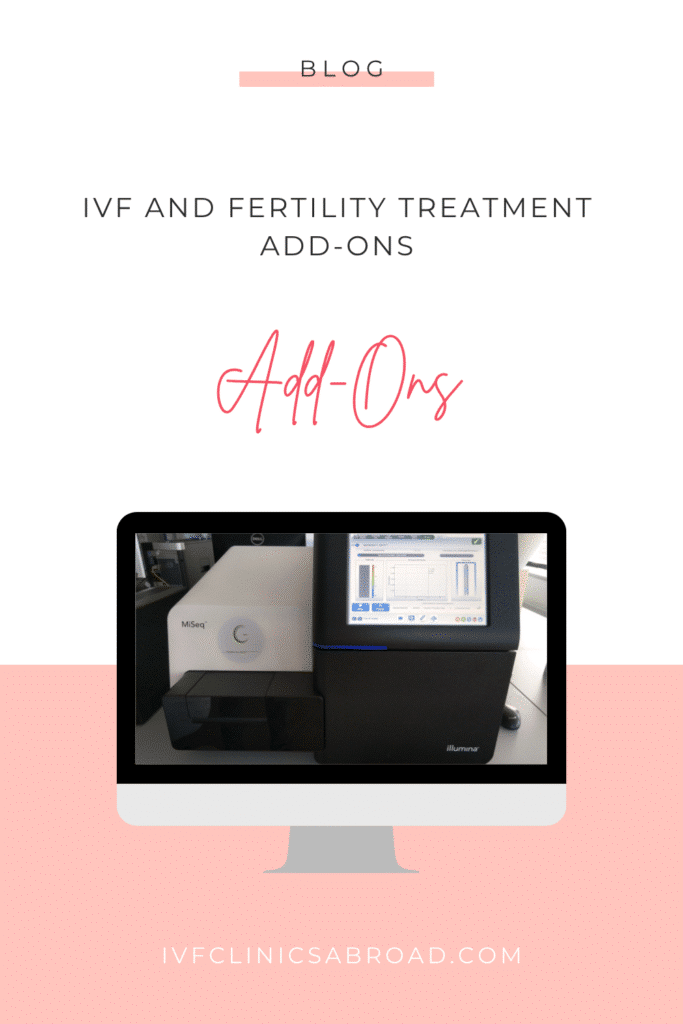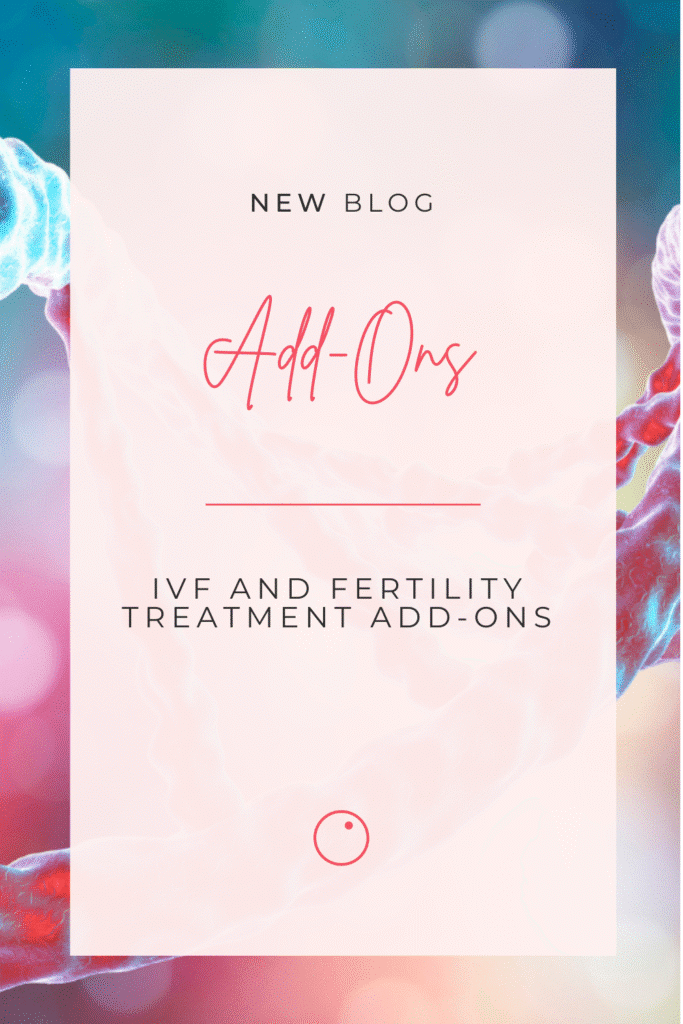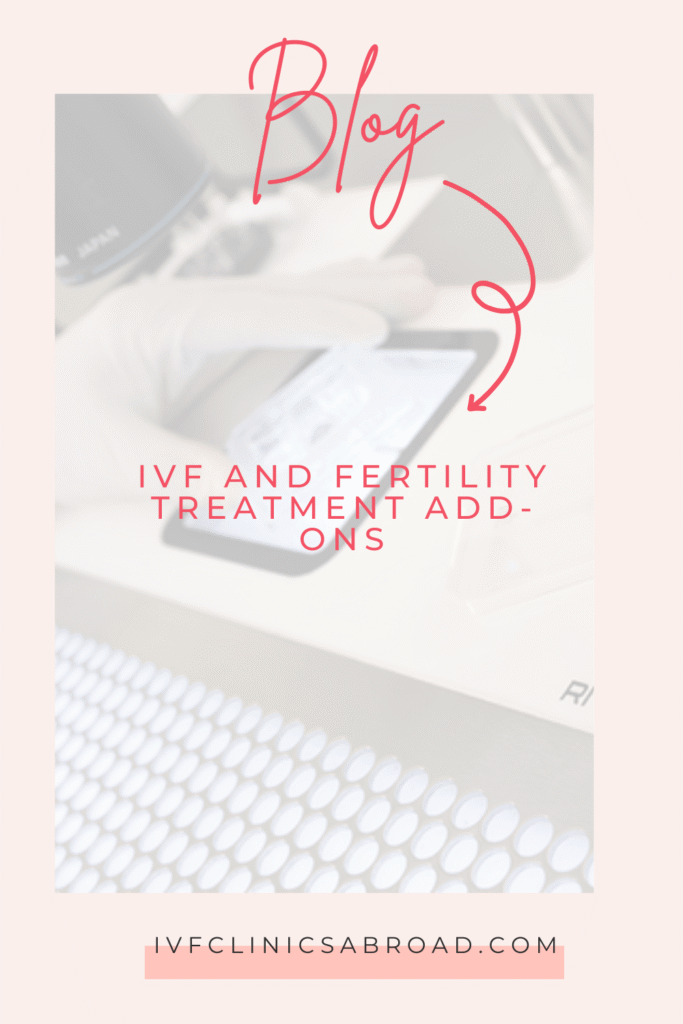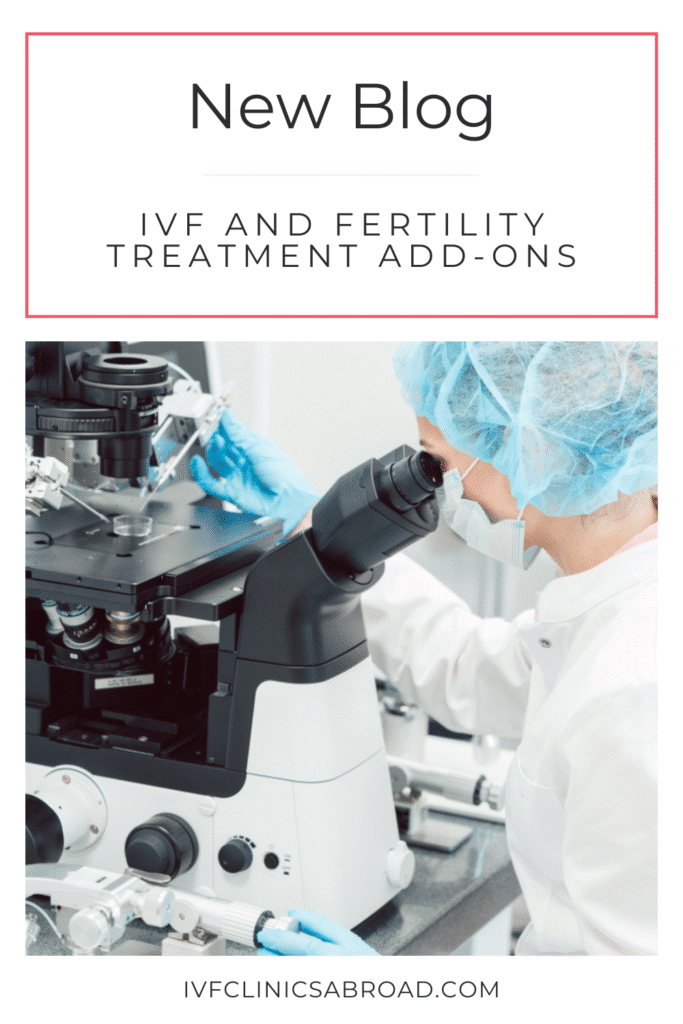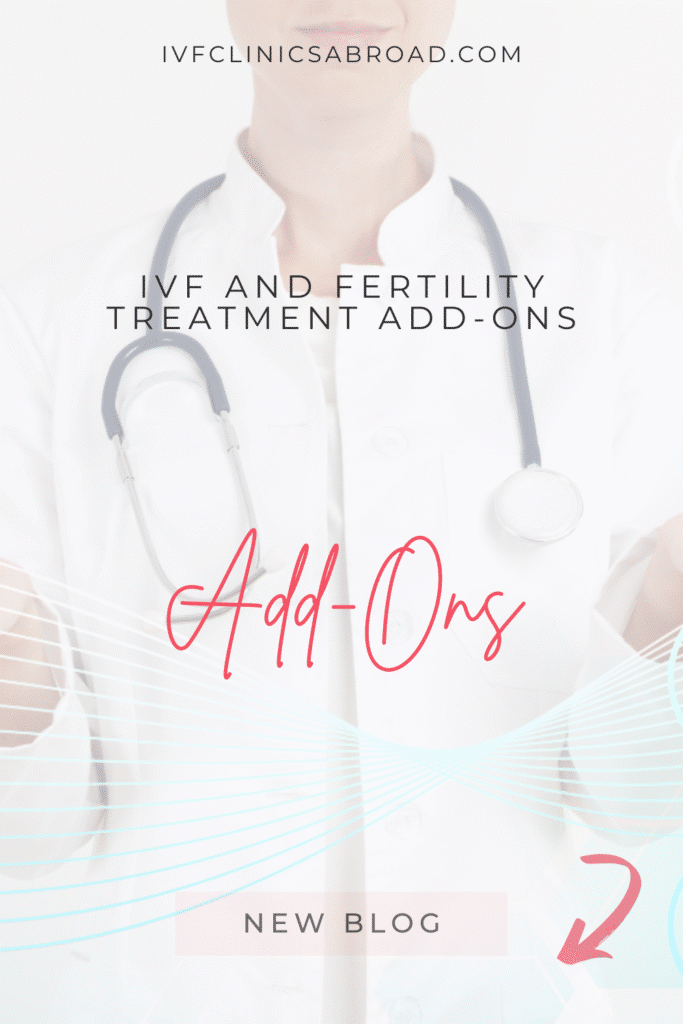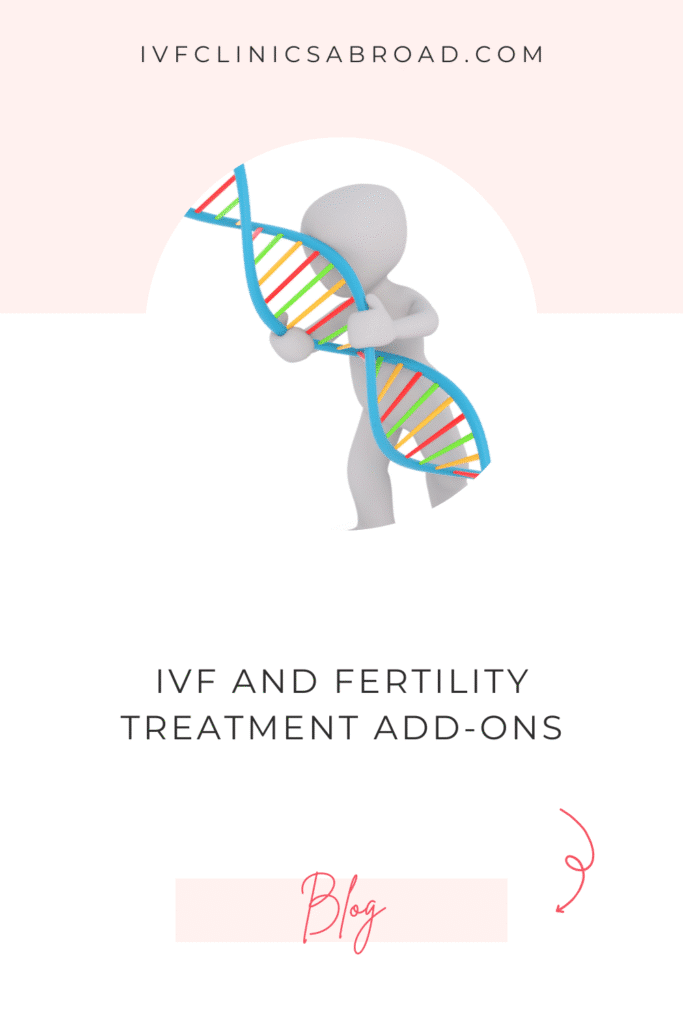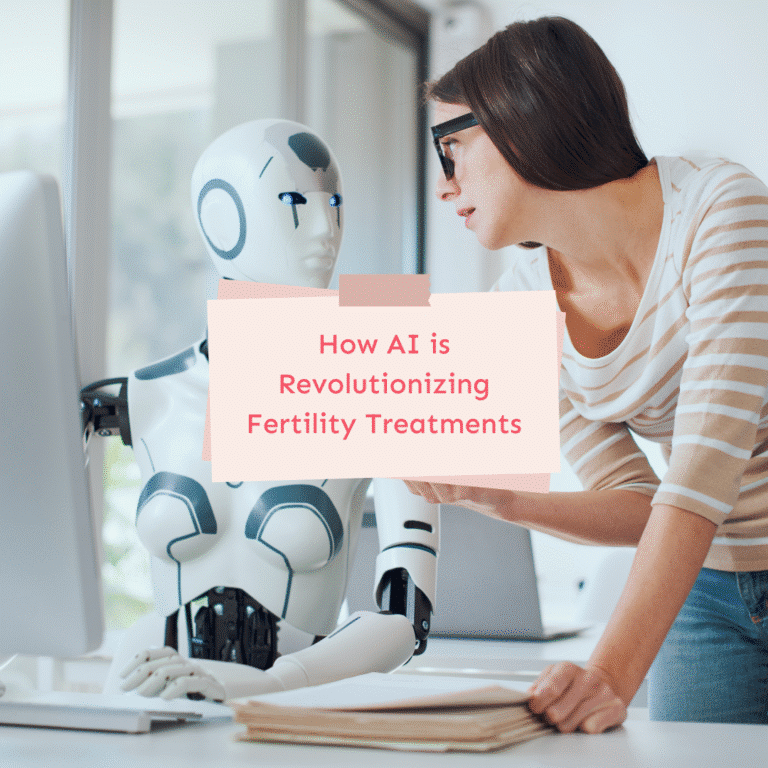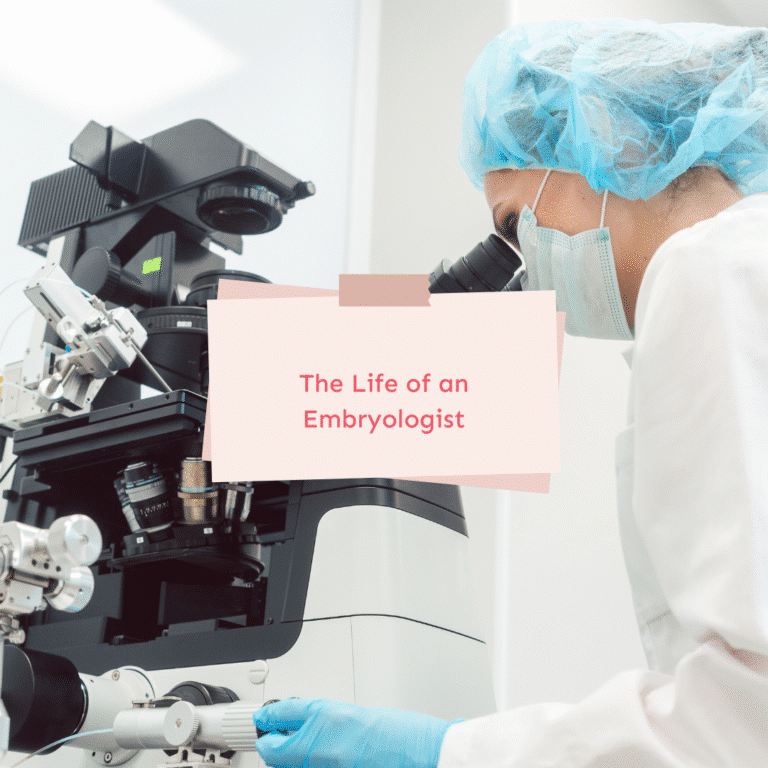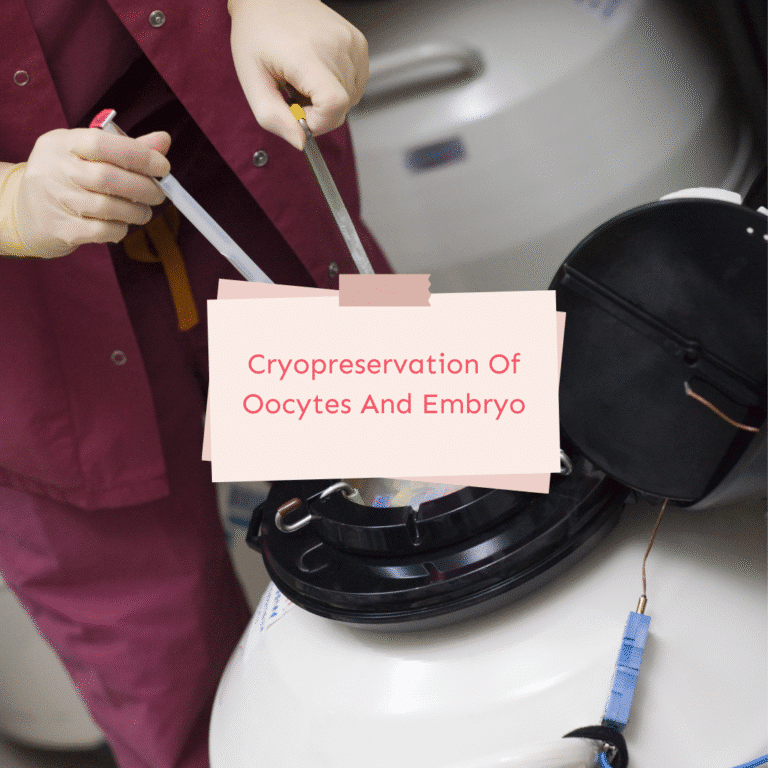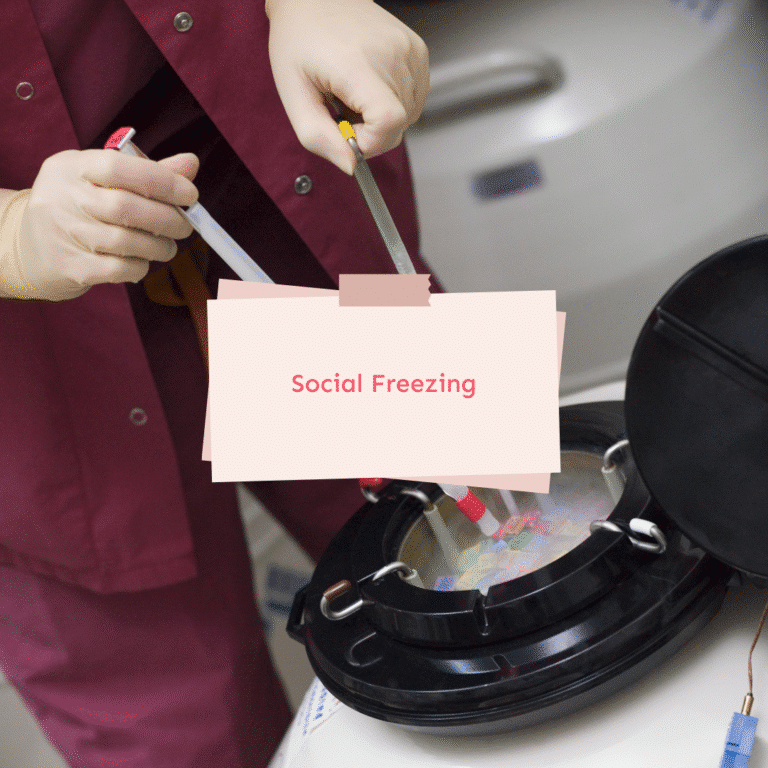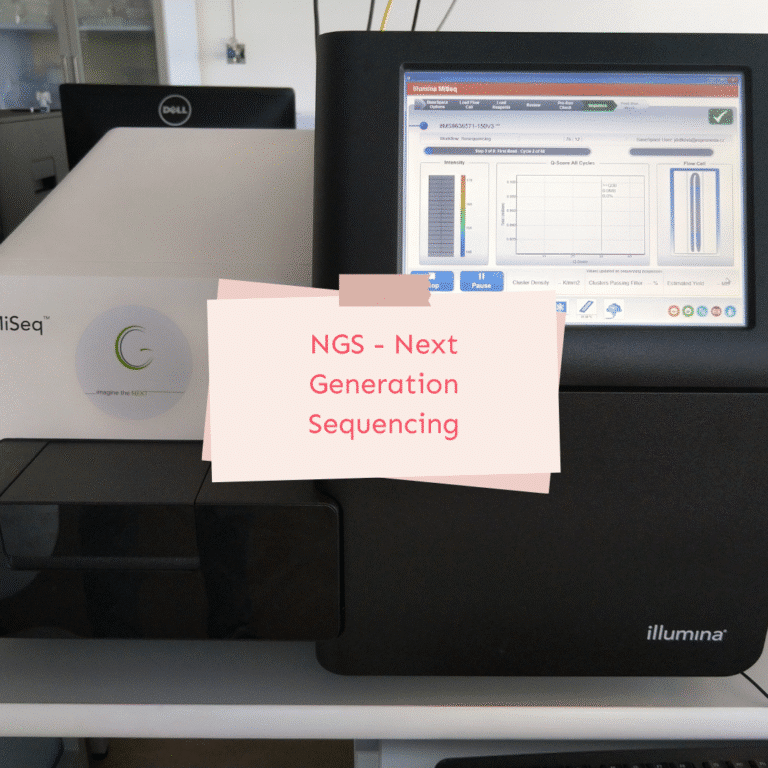IVF and fertility treatment add-ons: Which ones help – and which ones don’t? With limited evidence for many IVF add-ons, new practice recommendations and fertility regulator ratings can guide your decisions.
Understanding IVF and fertility treatment add-ons: What you need to know
When you’re looking into IVF or ICSI, you’re likely to come across a long list of optional extras – the so-called add-ons. These IVF and fertility treatment add-ons are offered to patients undergoing fertility treatment in the hope of improving the success rate of each IVF cycle. While some add-on treatments have become part of routine clinical practice, others are still being debated – especially by the Human Fertilisation and Embryology Authority, which maintains a new ratings system to indicate whether the treatment add-on is effective and supported by evidence.
Add-ons are optional, and yet they are often recommended by fertility clinics, especially in situations where patients have a poor embryo, male factor infertility or repeated implantation failure. For someone undergoing fertility treatment, it can be hard to tell which options are backed by strong evidence and which ones are still based on hope or individual experience. That’s why it’s so important to look at the efficacy of IVF and fertility treatment add-ons and understand whether a treatment add-on is effective at improving treatment outcomes for your specific situation.
In the following section, we’ll explore which treatment options are commonly offered, what different fertility specialists and researchers say about them, and how the HFEA ratings system can help you make better decisions – especially when you’re emotionally and financially invested in each treatment cycle, particularly concerning IVF and fertility treatment add-ons.
What are IVF add-ons and why are they offered?
How treatment add-ons became part of fertility care
If you’ve ever looked through an IVF clinic’s price list, you’ve probably noticed a long row of extras with names that sound highly technical – sometimes reassuring, sometimes just confusing. These are what we call IVF add-ons. A treatment add-on is an additional procedure, technique or lab method that is used alongside standard IVF or ICSI, often with the intention to improve reproductive outcomes in women or solve a specific problem like poor embryo development, male factor infertility or repeated implantation failure.
Most add-ons have been introduced over time as part of broader scientific and clinical advances. Some come from embryology labs, like extended embryo culture or assisted hatching, while others originate from reproductive immunology or data science. In many cases, they were first tested in small patient groups before being offered to patients more widely. But that doesn’t necessarily mean they are part of proven fertility practice. In fact, the Human Fertilisation and Embryology Authority – the fertility regulator in the UK – warns that many of these add-ons are still experimental and lack strong evidence to support routine use.
When add-ons help – and when they create more confusion
There’s no question that some treatment add-ons can improve reproductive outcomes for certain patients. For example, using preimplantation genetic diagnosis for embryo selection can reduce miscarriage risk in couples with known genetic issues. Other add-ons like ERA testing may help patients undergoing fertility treatment after multiple failed transfers, by identifying the right implantation window. But add-ons are not one-size-fits-all. What works for one group of patients might be completely ineffective for another.
The real challenge is that add-ons are often marketed in a way that makes them sound like guaranteed solutions. This can put pressure on someone undergoing fertility treatment to add more and more procedures to a single IVF cycle – hoping to improve the chances of having a baby. But more is not always better. Especially when the evidence to support an add-on is limited or unclear, there’s a risk of spending money, time and emotional energy without any benefit. That’s why it’s essential to look at each treatment add-on not just in terms of availability, but in terms of relevance and effectiveness for your specific case.
How fertility clinics present add-ons
Emotional language, success promises and fine print
When you walk into a fertility clinic or browse their website, it’s easy to feel overwhelmed by what’s on offer. Many clinics list a wide range of add-ons, and they often use emotionally charged language to describe them. You might read phrases like “boost your success”, “improve implantation” or “give your embryos the best chance”. And while that sounds hopeful, it’s important to understand that many of these claims are based on limited evidence – or none at all.
This emotional framing can make it difficult to separate fact from hope. For someone in a vulnerable situation – especially after a failed cycle – it’s completely natural to want to try everything. Some clinics know this and present add-ons as standard or even essential, sometimes without clearly explaining that the procedure is optional or experimental. The fine print, if it exists at all, may only appear after you’ve already committed to treatment. This is one of the reasons why the Human Fertilisation and Embryology Authority has introduced a public rating system to show which IVF add-ons are supported by research and which are not.
What responsible clinics do differently
A responsible fertility clinic won’t try to sell you every available add-on just because it exists. Instead, they will look at your individual case and only suggest something if it has a clear rationale. They will explain what the procedure involves, what the studies show, and whether the add-on is likely to improve treatment outcomes in your situation. They will also tell you if an add-on has limited or conflicting evidence – and let you make your decision without pressure.
Clinics like this are not always easy to find, but they do exist. They focus on transparency, evidence-based care and honest communication. In most cases, they also support their recommendations with data or guidance from regulators like the HFEA. If a clinic openly shares success rates, clearly lists what is optional, and doesn’t hide costs, that’s usually a good sign. And if they are willing to say “this won’t help you” – even if it means you spend less – it’s a sign you’re in the right place.
“A good clinic doesn’t try to sell you hope – it explains what’s real, what’s optional, and what might actually help you. Openness is not a bonus. It’s the baseline.”
Nathalie Wiederkehr
The most common fertility treatment add-ons
Why PGD, ICSI and cryopreservation are widely used – and what you should know
Some IVF add-ons are so commonly used that they almost feel like part of standard treatment – even if they are technically still optional. Preimplantation genetic diagnosis, for example, is a type of genetic testing for aneuploidy that allows embryos to be screened before transfer. In certain situations, especially in older patients or those with known genetic conditions, this can reduce miscarriage risk and improve the chances of having a baby. Still, PGD is not recommended for every group of patients and may not be useful in those with few embryos or unexplained infertility.
Another widely used add-on is intracytoplasmic sperm injection, better known as ICSI. Originally developed for severe male fertility problems, it involves injecting a single sperm directly into the egg during fertilisation. Today, it is often used more broadly – sometimes even when male factor infertility is not clearly diagnosed. According to many fertility specialists, ICSI treatment may not improve outcomes in good prognosis patients and could expose embryos to unnecessary manipulation. That’s why it’s important to discuss whether ICSI is really needed in your individual case.
Cryopreservation – or embryo freezing – is also considered a common and effective add-on. With advances in vitrification, the survival rate of frozen embryos has improved significantly. This allows patients to preserve good quality embryos for future use or plan a frozen embryo transfer in a better prepared cycle. Cryopreservation is one of the few add-ons that has shown strong outcomes and is supported by clinical experience across many different patient groups.
Add-ons like stem cells, Intralipid and PRP: More promise than proof?
In contrast, other fertility add-ons remain highly experimental or poorly supported by evidence. Some of these include therapies that aim to “improve the environment” of the uterus, often by modifying the endometrium in women with implantation difficulties. Intralipid infusions, for example, are offered to modulate the immune system, while platelet-rich plasma is applied to the endometrial lining to stimulate regeneration. While these methods sound promising, the current evidence to support their use is limited and inconsistent across studies.
Stem cell therapy is another area attracting attention. In theory, injecting stem cells into the reproductive tract could improve endometrial quality or ovarian function. But so far, this has only been studied in very small groups, and it’s unclear whether the treatment outcomes for someone undergoing fertility treatment are actually better. The same goes for mitochondrial replacement therapy, endometrial scratching and artificial oocyte activation – all of which are offered in certain clinics but lack reliable data to show they are effective at improving the chances of a successful pregnancy or live birth rate. If you’re considering any of these options, it’s worth checking the HFEA website to see how the treatment is rated, and whether there are clear practice recommendations for its use.
AI-based IVF add-ons: hope or hype?
How Chloe, Spindle View and other tools are changing embryo selection
Artificial intelligence is one of the newest developments in assisted reproductive technologies – and it’s moving fast. Until recently, embryo selection in IVF was based almost entirely on visual assessment. Embryologists would observe how the embryo developed over time, using microscopes and scoring systems based on shape, cell division and timing. But as more data became available, tech companies began training AI systems to analyse embryo development in much greater detail – and with more consistency than the human eye.
Tools like Chloe, developed by Fairtility, use machine learning to assess thousands of images from time-lapse incubators and predict which embryos have the highest chance of implantation. Another example is Spindle View technology, which detects subtle structures inside the egg that may affect fertilisation and embryo quality. These systems don’t replace the expertise of embryologists, but they offer a second opinion – one based on huge data sets and statistical models. In clinics where AI has been introduced, it’s usually used as part of embryo ranking to help select the best one for transfer.
Can AI really improve your chances of having a baby?
That’s the big question – and the answer is, not yet for everyone. While AI offers impressive tools, the studies behind them are still limited. Many of the early results come from private datasets or retrospective analysis, which makes it difficult to compare outcomes across different patient groups. We don’t yet know whether AI-assisted embryo selection leads to better birth rates in a routine clinical setting. And because most AI systems are commercially developed, independent validation has been slow.
Still, fertility clinics are increasingly offering AI-based embryo selection as part of their service – often at an extra cost. If you’re considering it, ask how the clinic uses the technology and whether it’s part of a larger embryology system or just an add-on. Some patients in the UK and elsewhere have already benefited, especially when there are many embryos to choose from. But for others, especially in cases with just one or two embryos, the added value might be limited. As with every treatment add-on, what matters most is whether the tool is likely to improve reproductive outcomes in your personal situation – not whether it sounds high-tech.
Limited evidence and what the regulator says
Understanding the HFEA ratings system
With so many fertility treatment add-ons on offer, it can be hard to know which ones are genuinely helpful. That’s exactly why the Human Fertilisation and Embryology Authority created a public rating system – to give patients a clearer picture of the evidence behind each procedure. On the HFEA website, you’ll find a list of add-ons with coloured traffic-light symbols that indicate whether the treatment add-on is effective at improving treatment outcomes, based on scientific research.
A green light means there is strong evidence from multiple studies that the add-on improves birth rates or other relevant outcomes in certain patient groups. An amber light means the evidence is mixed or not yet conclusive. A red light warns that there is no reliable evidence the add-on works – or that it may even carry risks without benefit. This simple system doesn’t tell you what to choose, but it does offer a starting point. And it gives you a way to question clinics that offer red-rated procedures without clearly explaining what’s behind them.
Why many add-ons are still classified as “experimental”
One of the reasons so many IVF add-ons still carry a red or amber rating is that fertility research is complex. Many studies are small, short-term, or not well-controlled – especially when it comes to newer add-ons. In addition, different clinics may use the same name for slightly different procedures, making it hard to compare results. Some add-ons also show promise in very specific cases but don’t help the broader group of patients undergoing fertility treatment.
This doesn’t mean the add-ons are useless – but it does mean we need to be cautious. The scientific and clinical advances advisory committee that supports the HFEA regularly reviews new data to see whether these procedures are safe and effective at improving the chances of a successful pregnancy. Until there is clear evidence to support routine use, the best approach is to ask questions, stay informed and rely on independent guidance. Add-ons may sound appealing, but unless they improve reproductive outcomes in a meaningful way, they might not be worth the emotional and financial investment.
Emotional and financial pressure around IVF add-ons
The fear of missing out when every cycle matters
When you’re in the middle of fertility treatment, every decision feels like it could change everything. You’re investing time, energy, hope – and often a lot of money – into something that offers no guarantees. That’s why the idea of doing “everything possible” can become so powerful. If there’s an add-on that might improve the chances, it’s easy to think: why not try it? Especially after a failed cycle, the emotional pressure to add just one more thing – another injection, another lab technique – can be overwhelming.
Fertility clinics often know how vulnerable this moment can be. Even when they don’t mean to, the way add-ons are presented can feed into the fear of missing out. Some patients undergoing IVF are led to believe that without certain extras, their chances will be lower – even when there’s no evidence to support that claim. For someone who already feels responsible for the outcome, this can create guilt, confusion and even more anxiety. The truth is: you shouldn’t have to make medical decisions based on fear. And you shouldn’t feel like you failed because you didn’t add everything on the menu.
How to protect your budget and make informed decisions
Fertility treatment is expensive, and add-ons can quickly push the cost well beyond the original plan. That’s why it’s important to be clear from the start about what you’re paying for – and why. Before committing to any extras, ask the clinic to explain how the add-on works, which group of patients it helps, and what the evidence says. If a treatment add-on is rated red by the HFEA or hasn’t shown to be effective at improving the chances of success in studies, that’s a good reason to pause and think.
One helpful step is to create a written overview of all the add-ons you’ve been offered – including costs and expected benefit. This gives you something concrete to reflect on, and it can be especially useful if you’re planning treatment abroad or comparing clinics. Some options may make sense in your situation, while others won’t. The key is not to do everything, but to choose what’s right for you – emotionally, medically and financially. You deserve clarity, not pressure. And even when you decide to say no to an add-on, that’s still a powerful and informed choice.
How to choose a fertility clinic that is transparent about add-ons
Questions to ask before you pay for any extras
Choosing a fertility clinic is already a big decision – and when add-ons are involved, it becomes even more important to know what you’re getting into. Some clinics include certain extras as part of their standard protocol, while others charge separately for each additional procedure. That’s why it’s worth asking a few direct questions before you commit: Is this treatment add-on recommended for someone in my situation, or is it routinely offered to all patients? What evidence supports its use? Has it been shown to improve reproductive outcomes, or is it still considered experimental?
It’s also important to ask whether the add-on is included in the base price or billed on top of the treatment cycle. Some clinics present a lower initial quote and then add costs later for things like extended embryo culture, assisted hatching or cryopreservation. Getting a full overview of what’s optional and what’s essential helps you plan more realistically – and it gives you more confidence when comparing fertility clinics across different countries.
What a good clinic will explain – even without being asked
A good clinic won’t wait for you to ask all the right questions. They’ll make the information accessible from the beginning – in writing, during consultations and on their website. They’ll be honest about what’s included in your IVF treatment and what’s optional. And they won’t push add-ons as must-haves when there’s limited evidence to support them. Instead, they’ll explain where the data is strong, where it’s still evolving, and what makes sense for your age, diagnosis and treatment goals.
Responsible clinics will also tell you when something probably won’t help you – even if that means you end up spending less. They understand that proven fertility care isn’t about selling more, but about choosing wisely. If a clinic takes the time to explain success rates, clarify risks and speak openly about which add-ons are backed by the HFEA or international guidelines, it’s a good sign you’re in the right hands. Transparency isn’t just a nice extra – it’s essential when you’re making decisions about your body, your finances and your future family.
Your next step: getting clarity before committing
What to know about IVF, gender selection and legal options
If you’re thinking about starting IVF or travelling abroad for fertility treatment, you’re already making brave and thoughtful choices. But when it comes to add-ons, legal options and questions like gender selection, the landscape can get complicated fast. Not every country allows the same things. Some clinics follow strict medical protocols, others don’t. And while some treatments may be legal in one place, they could be completely restricted elsewhere. That’s why it’s so important to understand what’s really possible – and under what conditions.
Gender selection, for example, is legally permitted in just a few countries and usually only in combination with embryo testing. Embryo donation and double donation also follow very different rules across borders – and not every offer you find online is as transparent as it seems. The same goes for how clinics use IVF add-ons: some are open and evidence-based, others rely more on emotional marketing. Getting clear on the medical, legal and ethical context can help you feel less overwhelmed and more in control of your decisions.
Where to get trusted guidance and compare clinics abroad
You don’t have to figure this out alone. If you’re unsure where to start or just want to talk through your options with someone who knows how clinics actually work, there’s help available. Our guide to IVF destinations in Europe gives you a clear overview of where treatments like embryo donation, egg donation or gender selection are allowed – and under which conditions. It also includes a sample clinic in Northern Cyprus, with transparent pricing and real success rates, so you can get a feeling for what’s possible.
This guide won’t tell you what to do, and it doesn’t promote any specific clinic. But it can give you the clarity you need to take the next step – with confidence and peace of mind. If you’d like more personalised support, we also offer private consultations to help you compare clinics and decide what’s right for your situation.
Let’s make sure you get the information – not the overwhelm.
Get the guide – or reach out for personal support.
